The Great Gaon of Italian Art
In memory of Ezra Mendelsohn, historian and humanist
“It is only by a study of Jewish institutions and literature that we shall begin to understand the puzzling character of the Jews.” These words appear early in an 1888 essay on “Contemporary Jewish Fiction” by the former Jew and recent Harvard graduate Bernhard Berenson (he soon dropped the Germanic “h”) in The Andover Review. The essay’s precocious author, who had arrived with his family from Lithuania only 13 years before, studiously avoided any suggestion that he himself had been born and raised among those “puzzling” people. Their “character and interests,” he wrote, “are too vitally opposed to our own to permit the existence of that intelligent sympathy between us and them which is necessary for comprehension.” Berenson (né Valvrojenski) had, in fact, converted to Christianity just three years earlier, in the fall of his second year at Harvard. In the essay, composed in Italy shortly after his graduation, he gave his place of residence as Florence. During the 1890s, he would return to Italy with his mistress (and future wife) Mary Costelloe, convert again—from Protestantism to Catholicism—and establish his legendary home of the next six decades outside of Florence, Villa I Tatti.
Although Berenson had failed to win Harvard’s prestigious Parker Traveling Fellowship, he had set out for Europe in June of 1887 nonetheless, with the same $700 awarded to Parker fellows, provided, in this case, by a group of Boston benefactors, one of whom was his future friend and client Isabella Stewart Gardner. It was in his second year in Europe that Berenson developed the expertise in Renaissance art that eventually gained him enormous wealth as one of the world’s leading experts in the attribution of paintings. His technique was derived largely from that of the Italian scholar Giovanni Morelli, whom Berenson met late in the latter’s life. As Rachel Cohen notes in her new book on Berenson’s “life in the picture trade,” Morelli’s method was based on the belief “that every artist has signature ways of doing small details—drapery, hands, ears—and that distinguishing these traits made a firmer basis for authentication.” Berenson’s teacher Charles Eliot Norton dismissively dubbed this the “ear and toenail school,” but Berenson employed the technique in his first book, Venetian Painters of the Renaissance, to great effect. (Later, in his essay on “The Moses of Michelangelo,” Freud would remark that this method of focusing on seemingly incidental details was “closely related to . . . psycho-analysis.”)
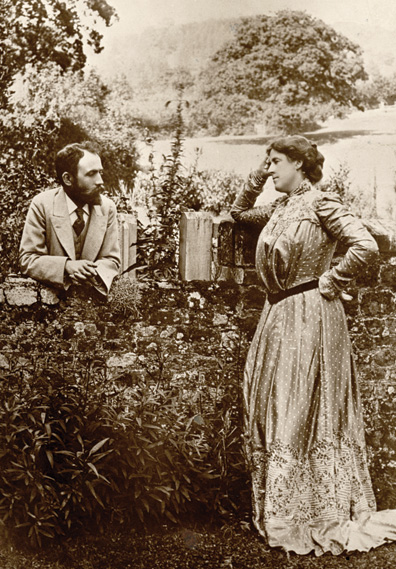
Shortly after the publication of Venetian Painters, Berenson helped Isabella Gardner acquire Botticelli’s The Tragedy of Lucretia, a picture that, as Cohen aptly comments, “would turn out to be of great significance to Gardner’s collection, to Berenson’s career, and to the annals of American collecting.” Two years later, he helped Mrs. Gardner acquire Velasquez’s portrait of Philip IV for $73,000, prompting Mary Costelloe to write her sister Alys that “Berenson has made a lot of money and I have helped in it.” The substantial fees acquired through such transactions helped Bernard and Mary first to rent and then eventually purchase the palatial Villa I Tatti, which over the years attracted a variety of guests ranging from Alys’ husband Bertrand Russell, who began writing “A Free Man’s Worship” there, to the Bouvier sisters (the future Jackie Kennedy and Lee Radziwill), who came in 1951. In 1903, Russell wrote to his brother-in-law that his mind was still “very full of pleasant memories . . . of cypresses and pines and views, and still more of our talks.”
Such talks, whether at I Tatti or at Berenson’s summer residence in Vallombrosa, also made a strong impression on Isaiah Berlin, whose first visit occurred shortly before that of the Bouvier sisters—but unlike theirs is not noted by Rachel Cohen. In September of 1950, Berlin thanked him for the “unbroken delight” of his recent visit, gratefully acknowledging that he “went away, my head in a great whirl with all the ideas, images, glimpses of persons & relationships, forms of life which . . . you scatter with so prodigal & unreckoning a hand.” Later describing the same visit to a friend, the Oxford philosopher was less effusive, writing of his aged host that his brain was still “very clear, his eye very sharp, his sentiments malicious.” Berlin continued: “To like him is difficult, perhaps even to respect him, but in a curious way one can be fascinated by so much controlled rational self-love . . . I went away with a slightly creepy feeling but not undisposed to see him again.” Indeed, less than three years later, in May of 1953, he reported to Arthur Schlesinger that he had seen “old Berenson in Florence, and I must say I am continually impressed.”
I know all that is said against him as an old, cunning, foxy humbug, his snobbery, his artificiality, his heartlessness etc. On the other hand, he is a man of extreme intelligence, of enormous intellectual liveliness, who really does . . . make one think about subjects one by one with great rapidity and brightness.
After reading these mercurial missives, all to be found in the second of three recently published volumes of Berlin’s letters, it is disconcerting not to find their author’s name in the index to Cohen’s new biography. This is particularly unfortunate, as Berlin’s letters to and about Berenson shed considerable light on the latter’s sense of his own Jewishness during his final decade. Writing to Nicky Mariano, Berenson’s long-time assistant (and sometime mistress), shortly after his death in 1959, Berlin reported that “on the last two occasions that I saw him he talked, when we were alone, at immense length about the Jews and his attitude towards them.” Berlin, who was born in Riga, noted that Berenson regarded him “as someone who, having come from Eastern Europe and settled in the West, was able to understand the particular synthesis which he
represented.”
Berenson’s 1888 essay, which combined deep immersion in the Jewish authors of his native Eastern Europe with what Cohen aptly calls a “strangely self-alienated” voice, was one of his first steps, intellectually as well as psychologically, toward that “particular synthesis.” That essay, which she misleadingly describes as a “thoroughgoing survey of recent Yiddish literature,” actually dealt more thoroughly with such Hebrew writers as Abraham Mapu and Peretz Smolenskin. Although it was composed during his European Wanderjahr, the extensive reading upon which it was based must have begun, as his earlier (and still best) biographer Ernest Samuels noted, during Berenson’s boyhood. Indeed, in her unpublished autobiography Mary Costelloe recalled her first impressions of her future husband during that year, as a “beautiful and mysterious youth,” who had “behind him the culture of a precocious little Jewish boy, who had lived for ten years in Lithuania.”
The “strangely self-alienated” voice in Berenson’s essay is also evident in a letter he wrote earlier that year from England to his sister Senda in Boston. The letter is transcribed somewhat differently by Cohen than by Samuels, whose version appears below:
Yesterday I received a pile of Jewish books and merely to look them over made me sick to fainting. I made up my mind then and there to toy no more with things Jewish or Oriental . . . If I had a boy to educate he should never learn Sanskrit, Hebrew, Assyrian, or any of those barbarous jargons. He should know the Classics and his English [literature] by heart.
Cohen’s version strangely places the first sentence at the end and has Berenson deciding to “toy no more with things Jewish and Oriental.” Neither biographer, however, pointed to the punning reference—which Senda would have understood—to Crawford Howell Toy (1836–1919), Harvard’s Hancock Professor of Hebrew and Other Oriental Languages, with whom Berenson had studied Arabic. He had also studied Sanskrit, and if he had not studied Assyrian, he did take “advanced Hebrew” (as well as Aramaic) with the Assyriologist David Lyon, who had earlier been a student of Toy (and to both of whom we shall return). The “pile of Jewish books” that made Berenson “sick to fainting” presumably included many of the works he would soon discuss in “Contemporary Jewish Fiction.”
This ambivalence could sometimes express itself in what David Rosand called Berenson’s “accommodating anti-Semitism.” Rosand cited a letter to Isabella Gardner, written during the year of European travel she cosponsored, in which Berenson described a train trip to Vienna “with Jews and other indecencies.” In another, he sneeringly described swaying men praying in a Berlin synagogue as presumably engaged also in “selling old clothes” to each other. Gardner might well have asked herself what brought a baptized Jew to enter that Berlin synagogue in the first place. As Samuels observed early in the first volume of his biography, published in 1979, Berenson “would never quite lose the traces of Jewish self-hatred.” Samuels added that the young Harvard graduate still “had much more to learn of the subtle ramifications of anti-Semitism, against which the garment of Christianity which he had put on would not protect him.”
The last two sentences quoted illustrate the aptness of Joseph Connors’ assertion, in the introduction to his co-edited volume Bernard Berenson: Formation and Heritage, that Samuels’ biography “is beautifully written.” Connors, an art historian at Harvard who for some years headed its Center for Italian Renaissance Studies at I Tatti (Berenson left the well-appointed villa, together with its magnificent library and art collection, to his alma mater), noted no less aptly that “Samuels’s work will long be the basis of scholarship about Berenson and his world.” Somewhat less accurately, however, he predicted that “there will be a sensitive treatment of Berenson’s ambiguous relationship to his Jewish roots in a forthcoming biography by Rachel Cohen in the series Jewish Lives.” Unfortunately, although no less elegantly written than Samuels’ more substantial work, Cohen’s book is not a successful discussion of this most perplexing of “Jewish lives.”
Cohen herself describes her slim biography as “more distillation than excavation,” explaining that it “focuses on a handful of relationships that allow Berenson to be seen in the round.” That “handful,” moreover, includes six relationships with women and only one with a man. The latter, in keeping with Cohen’s title, is the crafty (and sometimes crooked) art dealer Joseph Duveen, whose sales of expensive European paintings to such clients as Isabella Gardner and J.P. Morgan were often bolstered by Berenson’s authentications. The women upon whom Cohen focuses, beyond Isabella Stewart Gardner, are Berenson’s sister Senda (herself a remarkable figure), his wife Mary, his assistant/mistress Nicky Mariano, the partly (and secretly) African-American Bella da Costa Greene, who was J.P. Morgan’s librarian and Berenson’s lover, and the blue-blooded writer and fellow expatriate Edith Wharton. These relationships—with the exception of that with his sister Senda—are hardly the ones through which to best explore Berenson’s Jewish identity. The suspicion arises that they were chosen by Cohen largely on the basis of recent biographies from which they could conveniently be distilled: Meryle Secrest’s Duveen: A Life in Art (2005), Heidi Ardizzone’s An Illuminated Life: Bella da Costa Greene’s Journey from Prejudice to Privilege (2007), Hermione Lee’s Edith Wharton (2007), and Ralph Melnick’s Senda Berenson: The Unlikely Founder of Women’s Basketball (2007).
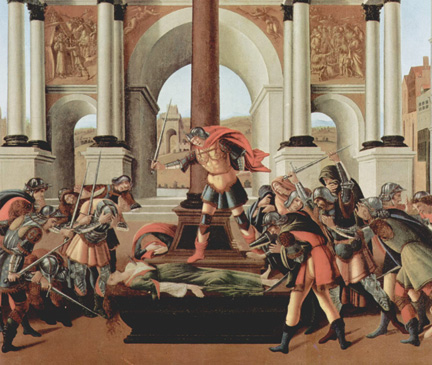
Had Cohen truly been interested in pursuing Berenson’s “ambiguous relationship to his Jewish roots,” Isaiah Berlin would not have been absent from Cohen’s biography. And instead of—or along with—Bella da Costa Greene she might have devoted more attention to another woman, Aline Sassoon (née Rothschild), who first met Berenson in St. Moritz during the summer of 1904, and later introduced him to Duveen. As the historian Peter Stansky has noted, there are some 50 letters from Aline to Berenson in the archives at I Tatti. When Berenson first met Aline he had been married for some four years to Mary, who followed the friendship quite closely. Writing to her sister-in-law Senda from London in 1906 she passed on the rumor that Berenson had, since his arrival, “lunched or dined—sometimes both—with Lady Sassoon fourteen days out of the sixteen.” Stansky suggests that Aline “may well have been the most important woman in Berenson’s life, although he treated her with some disdain.”
Could Berenson’s disdain for Aline, together with his apparent strong attraction to her, be related to their shared Jewish roots? In a 1904 letter from St. Moritz, Berenson complained to Isabella Stewart Gardner about having “to put up with pis aller [the last choice] like Lady Sassoon.” He was clearly learning to ape the genteel anti-Semitism of the English upper classes. Two years later John Maynard Keynes wrote from I Tatti to his friend (and sometime lover) Lytton Strachey that upon arriving he had missed Berenson, who “had gone off in a motor car to flirt with a foul woman called Lady Sassoon.”
Cohen mentions the Oxford historian Hugh Trevor-Roper, alongside Ernest Hemingway and Walter Lippmann, as one of Berenson’s correspondents during his later years, but is clearly unaware of the excellent edition by Richard Davenport-Hines of Trevor-Roper’s letters, over 12 years, to his older friend. These, too, are relevant to Berenson’s Jewish sensibilities. In a letter from 1955, for example, Trevor-Roper mentions that Berenson had brought to his attention the autobiography of the 18th-century Jewish philosopher Solomon Maimon with whom Berenson had good reason to identify (among other things, Maimon was from Lithuania and had toyed with the possibility of an expedient conversion). Eastern European Jewish autobiographies were, in fact, a continuing interest of Berenson’s. Nicky Mariano, who knew him for some 40 years, recalled that Berenson’s “love of things Russian included translations from Yiddish,” citing such works as Memoirs of a Grandmother by Pauline Wengeroff and the first two volumes of Shemaryahu Levin’s autobiographical trilogy. Melnick, in his biography of Senda Berenson, cites her brother’s recommendation, in a 1930 letter, that she read Levin’s first volume: “but for insignificant differences, it could pass for the story of our own childhood.” Some of Berenson’s previous biographers have noted that when he later encountered Chaim Weizmann’s Trial and Error he remarked of the first chapter, describing Weizmann’s childhood in Belarus: “It was just like that.” Cohen, however, makes no mention of these autobiographies.
The American art historian Meyer Schapiro is another one of Cohen’s significant omissions. Cohen briefly mentions Schapiro among Berenson’s many correspondents, but ignores his controversial essay “Mr. Berenson’s Values.” That 1961 essay, which Joseph Connors imprecisely calls “a thoroughly negative obituary,” is, in fact, neither “thoroughly negative” nor an obituary (Berenson died in 1959), but a response rather to the 1960 biography by the British journalist Sylvia Sprigge. In a letter written shortly after its appearance Isaiah Berlin tartly noted that he had read “only one chapter, in which I found no fewer than thirty-seven errors, seven howlers, and a great many inaccuracies.” Sprigge’s biography was hardly more objective than Berenson’s own 1949 Sketch for a Self-Portrait.
Schapiro, who had first visited Berenson during the 1920s, reviewed his autobiographical work in Commentary. In the 1961 essay, which originally appeared in the British journal Encounter, Schapiro returned to Berenson’s autobiography, perceptively noting the author’s frequent references to Paul and Spinoza, “two deeply dedicated and uncompromising Jews who, like himself, broke with the religion of their ancestors.” Yet, he added somewhat spitefully, “theirs was an act of courageous conviction, while for him the change of religion was a short-lived conversion that helped to accommodate him to a higher social milieu.” Although his dismissal of Berenson’s conversions as “short-lived” was perhaps mean-spirited, it also amounted to recognizing the late sage of I Tatti as a fellow Jew. Indeed, Schapiro, who was himself a Lithuanian Jew who knew that Berenson stemmed from the same region as the Vilna Gaon, went on to assert: “One might say of him, from a Jewish point of view, that in establishing the canon of authentic works of the Renaissance masters, he made himself the great Gaon of the heritage of Italian art.” He also remembered having spied “on the fly-leaf on a Latin school-text his youthful signature in large stiff letters, and beneath it the date according to the Jewish calendar in a most delicate minute Hebrew.”
Berenson’s continuing, if contradictory, connection to his Jewish roots was at the center of a little-known exchange of letters between Berlin and Schapiro. Berlin had felt “impelled” to publicly respond to Schapiro’s essay, but first sent a draft to Schapiro, explaining: “I owe something to the memory of my friend B.B., but not anything that might in any way upset or annoy yourself, with whom my friendship is far deeper.” In his—ultimately unpublished—letter to Encounter, Berlin described Berenson’s “ironical and deeply civilised intelligence” before proceeding to the “difficult” matter of “his attitude to the Jews.”
Like [Heinrich] Heine (with whom he felt an affinity) and perhaps Marx . . . he broke away from his East European Jewish milieu early in life, and was clearly in his youth determined to place the maximum distance between himself and the detested Pale of Settlement; he probably felt at one time that he had succeeded in this, but towards the end of his life this goal seemed to him at once less attainable and less desirable. I do not think that he was embarrassed by his origins; but he had revolted against them, and bitterly attacked the national feelings they inspired in others.
Berlin went on to question Schapiro’s assumption that the motive behind Berenson’s conversions had been “desire for social ease and advancement,” asserting that anyone “who did not know him intimately” would hardly be “in a position to judge.” Schapiro, with equal nobility, urged Berlin to publish his letter, adding that “any future biographer will have to take your judgment into account.” When Samuels composed his two-volume biography this exchange had not yet been published, but in 2004 the letters—as Stuart Schoffman helpfully reminded me—appeared in the arts journal The Brooklyn Rail. Now that Cohen has not utilized them either, it may indeed still be said that any future biographer of Berenson’s will have to take into account Berlin’s 1961 letter—as well as his earlier ones.
It would also be wise for a future biographer to examine Berenson’s undergraduate experience at Harvard a bit more closely. Like Berenson’s previous biographers, Cohen notes that he studied Arabic with the southern scholar Crawford Toy, who warmly recommended him for the Parker traveling fellowship to no avail. Cohen, like some of those biographers, also suggests that Charles Eliot Norton’s apparently influential refusal to write on Berenson’s behalf may have been motivated by anti-Semitism, but provides no real evidence. It may be noted, however, that in 1869 Norton wrote to a female relative in Boston observing that in England “the Jews have it all their own way, and . . . are uppermost in this land.” Toy, by contrast, went out of his way to write, in his book Judaism and Christianity, that “neither in the early centuries nor in the Middle Age[s] nor in our times [emphasis added] is it possible to discover any marked ethical difference between Jews and Gentiles.” “Shylock and Antonio are on a par in this regard,” he wrote in that 1890 work. This may help account for Berenson’s continuing relationship with Toy, with whom he met periodically in Europe.
Unlike earlier biographers, however, Cohen makes no mention of Berenson’s other instructor in Semitic languages, David Gordon Lyon. The Alabama-born Lyon had studied Hebrew with Toy at The Southern Baptist Theological Seminary, before eventually becoming Harvard’s first Assyriologist. In contrast to Toy, who became a Unitarian at Harvard, Lyon remained a staunch but enlightened Baptist. His diary for 1885, preserved at Harvard, records that on the second day of January the university’s president, Charles William Eliot (a cousin of Norton’s), requested that he “conduct prayers.” Although Lyon consented, he noted that “the students are so opposed to compulsory observance.”
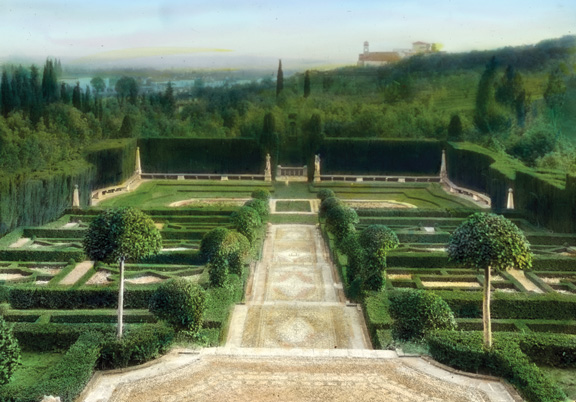
of Congress Prints and Photographs Division.)
In January of 1885 Berenson—still a Jew but probably not exempt from morning chapel—began the second semester of his freshman year and was one of six students enrolled in Lyon’s course in Syriac (Christian Aramaic). One wonders whether his relationship with Lyon played a role in Berenson’s decision to convert several months later. It is also possible that he discussed the matter with Toy, who, his admirable tolerance notwithstanding, wrote that Christianity’s rise “out of Judaism is . . . in conformity with a well-defined law of human progress.” Lyon also recommended Berenson for the Parker fellowship, writing that although “he is still very young, which perhaps accounts for an apparent change in the direction of his studies, from philological to literary,” he regarded him as “a man of unusual ability and of brilliant promise.” Had the young Berenson decided to channel his abilities in a more philological direction, he might have preceded Harry Austryn Wolfson (1887–1974), another Lithuania-born Jew and Harvard graduate, as the university’s first professor of Hebrew literature and philosophy.
Although Berenson’s “brilliant promise” was realized in the world of art rather than in literature or scholarship, he remained deeply interested, especially during his later years, in the relations between Judaism and Christianity. In April of 1949, shortly before Passover and Easter were to fall on the same day, he commented in his diary on the similarities between the Old and New Testaments, deriding those who see the first as “so hard, brutal, legalistic, and the second, the gospels particularly, so humane and even tender.” Such people forget “that both Old and New Testament are equally Hebrew, only that by the time of Jesus the Israelites had become Jews, and that their pagan ways had softened and become humanized.” Berenson continued with the following thought for the upcoming paschal holidays: “If only we realized how Jewish the New Testament was we should begin to realize how little there was in primitive Christianity that was not a product of contemporary Jewish feeling and groping, and how much it did to shape Christianity for all time.”
Berenson’s consciousness, even as a nominal Christian, of when Passover fell was already evident some two decades earlier, when he traveled with both Mary and Nicky Mariano to “Syria and Palestine.” At Nablus, Nicky later reported,
Mary noticed a line of people climbing up like ants toward the top of the mountain . . . and wondered what they were up to. Suddenly B.B. became interested. “To-day is the Jewish Passover” he said, and in this place there must be still a small community of Samaritans who celebrate it in the ancient way by sacrificing a lamb on top of Mount Gerizim.
Later, at dinner in town they sat near an English missionary couple and “B.B. jumped to the conclusion that they had been watching the Passover feast on Mount Gerizim and started to ask them about it.” Berenson was probably intrigued by the Samaritans because they were, like himself, Jews outside Jewish tradition.
As Nicky Mariano noted in her 1966 memoir, “B.B was not a Zionist in those days.”
He had to go through the Hitler years before he could feel a real sympathy with the heroic effort of the Israelite [sic] state builders. Only the danger of orthodox Jewry having the upper hand in Israel filled him with horror, and became a sort of obsession with him during his last years.
Indeed, in a 1951 letter to his cousin, the American diplomat Robert Lawrence Berenson, who had just been in Jerusalem, Berenson worried about “rabbinical zealots,” predicting that “if they get the upper hand Israel will become a mere Yeshiba supporting drones who shake backward and forward mumbling prayers like Tibetan Lamas.”
In September of 1948, Hugh Trevor-Roper wrote to Berenson that he was “fascinated by the internal struggle in Palestine,” which reminded him of “revolutionary politics in Cromwell’s time,” but was reluctant to travel there, “as I have been condemned to death by the Stern gang.” Berenson replied that “no people reaches statehood except through blood & filth & terror,” adding somewhat more ambivalently that “now that the Jew is ready to dig the soil, fight & die, nothing will stop him—unfortunately and unhappily.”
This was considerably different from Berenson’s position some 11 years earlier, writing to Mary from Cyprus, where he had sailed with “several hundred German-speaking and ever so German-looking Jews,” on their way to “the land of their very remote and exceedingly putative fathers.” That encounter, as well as recent events in Europe, gave him reason to rethink the nature of the Jews, who were, he observed in that 1937 letter, “neither a religion nor a nation nor a race any more, whatever they may have been at one time,” adding that he wished “one could define what they are, and why they are so attractive and repellent, repellent chiefly.” But Berenson, on his way to Zionism, also began to think about his own Jewish self-hatred. “It is notorious,” he acknowledged to his diary in December of 1941, “that converted Jews are apt to turn bitterly and ragingly anti-Semite.”
In that same entry from 1941 he noted “the fact first identified by [Heinrich] Heine, that a Jew to be taken for silver must be of gold.” It is no coincidence that he was identifying during those years with the 19th-century German writer, whose conversion to Christianity had been famously skin-deep. One of Heine’s best-known poems had dealt with the 12th-century poet and pilgrim Judah Halevi, and Berenson began translating Halevi’s famous “Lament for Zion,” as he called it, on a sleepless summer night in 1949. He sought “in vain for verbal equivalents that would convey the rhythm of the quatrains, yet carry the exact sense.” He had gone back to Hebrew some seven years earlier. In a 1942 diary entry, later posthumously published in his One Year’s Reading for Fun, he wrote that having returned “for the first time in all but sixty years to the Psalms in Hebrew,” he discovered to his “surprise and delight” that he “could read quite easily.”
Berenson was still working on Halevi’s Zion poem when he was visited by the famous American playwright, journalist, and wit S.N. (Sam) Behrman. Behrman was writing a series of articles on Duveen, which appeared in The New Yorker in 1951. Behrman, as he later wrote in his People in a Diary, brought along “Edmund Wilson’s last Christmas card, a gay little production” because he “wanted to show B. B. a poem of Wilson’s in Hebrew, dedicated to Isaiah Berlin.” Upon being presented with the poem Behrman’s host “gulped it narrowly but said he’d have to look at it again.”
Behrman impishly chose to call his chapter on Berenson “Esrigs at I Tatti,” mimicking the latter’s Lithuanian pronunciation of the citron used on Sukkot. One morning, while they were walking on the extensive grounds of his estate, Berenson suddenly said: “My Jewishness is an essential part of me.” He then added, with characteristic irony: “We should be proud, you know, we Jews, of our greatest creation—Jesus Christ.” On his stroll with Behrman, however, it was not the New Testament that came up for Jewish discussion, but citrus fruit. Behrman thought that Berenson was growing lemons, but his host insisted that they were “esrigs.” Berenson then asked the Worcester native whether he had a “suka” while growing up, to which the latter replied: “Of course, my father built it in our yard.” That yard, Berenson was surprised to learn, also had a pear tree, prompting him to exclaim: “You must have been very rich.” To Behrman’s question “didn’t you have a suka?” he memorably replied: “The ambiance of the North Station in Boston where we were shunted when we arrived from Lithuania did not encourage pleasure domes.”
That was the last sentence from their Jewish-themed banter quoted by Samuels in the first volume of his biography, but Behrman’s amused (and amusing) account went on. Berenson insisted that his “esrigs” met “every specification” of Jewish law, and, implausibly, that he even sent them to Israel. When Behrman admitted having once accidentally broken the stem of his father’s “esrig,” Berenson, who was clearly enjoying himself, exclaimed: “You broke the pittim!” And when he admitted that his father had been furious, the sage of I Tatti replied: “Justifiably. The pittim is the soul of the esrig. Also probably a priapic symbol.” When Behrman, continuing their midrashic madness, noted that his interlocutor had said “nothing about the lulov,” presumably even more priapic than the citron, Berenson replied in mock-scholarly fashion: “It was carried in religious processions in the Minoan civilization.” As to why Jews added the “esrig” to the practice, his explanation was: “Because we are a peculiar people.”
Samuels understandably omitted the spirited discussion of priapic pittims from his two-volume biography, which illuminated—but did not focus upon—Berenson’s Jewishness. Cohen, however, has unfortunately gone a step further, throwing out the esrig with the pittim. She quotes only the early part of that morning discussion with Behrman, which she may have taken directly from Samuels, while omitting the rest, including Berenson’s concluding remark that “we are a peculiar people.” That first person plural was the same he used when playfully proclaiming earlier that day: “We should be proud, you know, we Jews, of our greatest creation—Jesus Christ.”
During those years Berenson was ambivalently proud not only of the Jewish Jesus but also of the Jewish State. In his 1951 letter to his cousin Lawrence he not only addressed the dangers posed by “rabbinical zealots,” but also made prescient suggestions about military and foreign policy:
Israel must, in my opinion, first and foremost become the most powerful organization in the Near East. That alone will render the Jew the self-respect he suffers from lacking. That will procure him respect from OTHERS the world over and of his neighbors in particular. Then in good time Israel must conquer Transjordania, of which perfide Albion needlessly treacherously deprived it . . . With Trans-Jordania [sic] Israel could support millions and make her authority felt in Cairo as well as Baghdad and Damascus and be a state even ex-Great Britain would want to be allied with.
Berenson recognized that this was a “wild program” that “could be realised only with American money and American-Jewish pull” together with “the iron determination of the Israelis.” Although Cohen also omits this letter from her charming but limited biography, it may indeed serve as a key to Berenson’s heightened sense of his own Jewishness during his final decades, one that never ceased to be impishly ironic despite its increasing intensity.
Comments
You must log in to comment Log In
Suggested Reading

Before & After October 7: A Symposium
We asked distinguished friends and contributors a simple question: what did you believe before October 7 that you no longer believe?
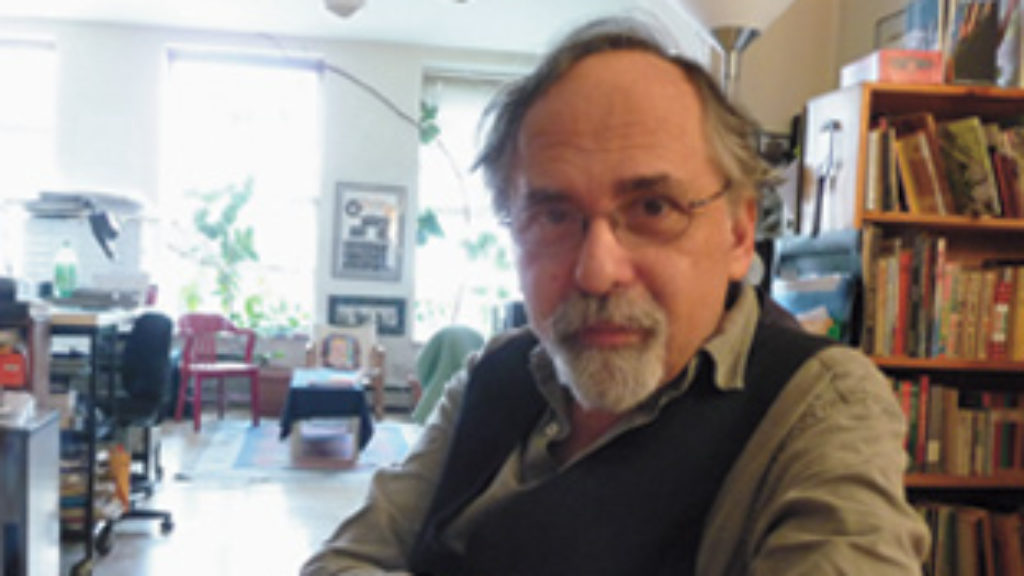
MAD Maus
A look inside the making of Art Spiegelman's classic graphic novel about the Holocaust.
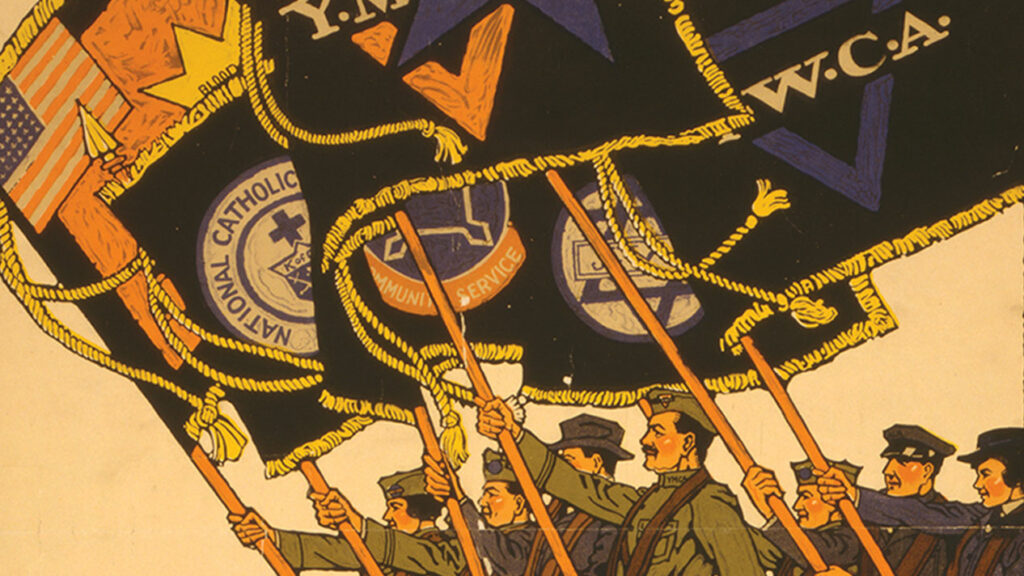
Pancho Villa and the Star of David Men
When the Young Men's Christian Association began offering wholesome recreation to soldiers in 1916, Jewish leaders were as as worried about evangelism as they were about bars and bordellos.
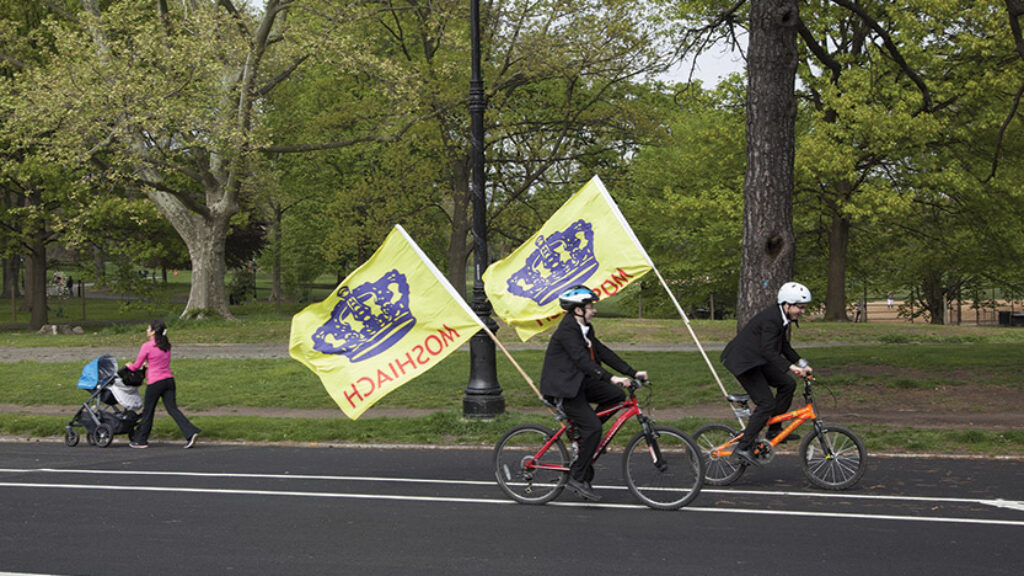
Foundation Stone
The meshichists remove the covering from Schneerson's red velvet chair because he will be sitting on it during prayer; they gaze at the spot where he is believed to be stationed; and they call him up to the Torah for aliyot, parting ways to make room for him as he “walks” up to the bimah.

joripo
Such a masterful portrait of this "shliach" of the Jewish people. One can only imagine the real or imagined horrors of chinuch and culture that such maskilic figures endured, to be so imbued with "running" energy for so much of their lives, but of course the consolation is that that non-Jewish world gets to benefit from their work--and we get such adv unforgettable episode as Berenson engaged in pilpul about the "esrigs" he insists on growing in his Florence gardens. Thank you to Elliott Horowitz...